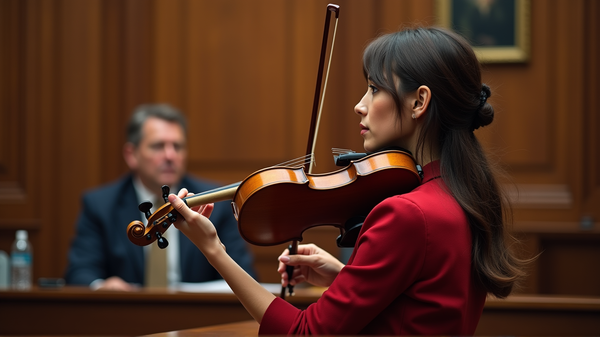Columbia's Decision: A Monumental Shift or Political Strategy?
In a political climate rife with tension, Columbia University’s recent agreement with the Trump administration is sending shockwaves through the academic and political world. But what does it all mean? Let’s unravel this complex story together.
Columbia’s Calculated Move
As President Donald Trump embarked on his second term, Columbia University found itself at the epicenter of a political tug-of-war. The university’s decision to comply with several demands from the White House came with the hope of restoring $400 million in federal funding, which had been previously axed. However, the response was far from what Columbia had anticipated—an unresolved financial situation and threats to its accreditation loomed larger than ever.
Unseen Consequences
Despite Columbia’s attempts to pacify the administration, tensions rose. Part of the agreement involved Columbia appointing a “jointly selected independent monitor” to ensure compliance with federal laws regarding admissions, hiring, and international students. Education Secretary Linda McMahon’s reaction was pivotal. Her exuberance on national media post-deal spoke volumes, as she called it “a monumental victory for conservatives,” emphasizing the platform to address perceived liberal bias on elite campuses.
The Political Underbelly
The official narrative focused on combating antisemitism and harassment in education. Yet, McMahon’s candid remarks revealed a different dimension to the agreement. Her admission suggested a broader political motive—balancing political viewpoints on campuses—a revelation that resonated with political and media analysts alike.
The Ripple Effect
The fallout of this agreement shapes the landscape of higher education and political dynamics. While the intent revolves around student protection, the undertones of political influence persist, raising questions about the balance of power in academic environments.
A Broader Strategy?
Michael Kinsley’s poignant quote, “A gaffe is when a politician tells the truth — some obvious truth he isn’t supposed to say,” sits aptly with McMahon’s narrative slip. This development prompts a reflection on the intricate relationship between education and politics, hinting at a larger strategy to influence campus life.
Columbia University’s journey serves as a microcosm of the broader clash of ideals between academia and government influences. As the pieces of the political puzzle fall into place, the world watches Columbia’s next moves with bated breath—where compliance meets strategy under the watchful gaze of national scrutiny.
According to MSNBC News, this event has profound implications for academia and beyond.




